Lantana spp.
With its alluring and vibrant blooms, lantana is one of the most beloved ornamental plants you can have in your garden.
Its splashes of color will bring an undeniable beauty into your landscape, acting as a one-of-a-kind asset to your garden. I may be a bit hypnotized by the magic this flowering plant brings, and I am sure you will be too!

We link to vendors to help you find relevant products. If you buy from one of our links, we may earn a commission.
The Lantana genus, comprised of flowering shrubs from the Verbenaceae family, includes over 150 species.
Lantanas are perennials in USDA Hardiness Zones 9 to 11, but gardeners in cooler regions can grow them as annuals.
Known for their small clusters of brightly colored flowers, which come in a wide range of hues, their beauty attracts gardeners and pollinators while enhancing the natural ecosystem.
Here are the topics that we’ll explore:
What You’ll Learn
What Is Lantana?
Lantanas are showy little flowers that will cause you to do a double-take when walking by. They have star-shaped tubular blooms that grow in clusters, in a range of different colors.
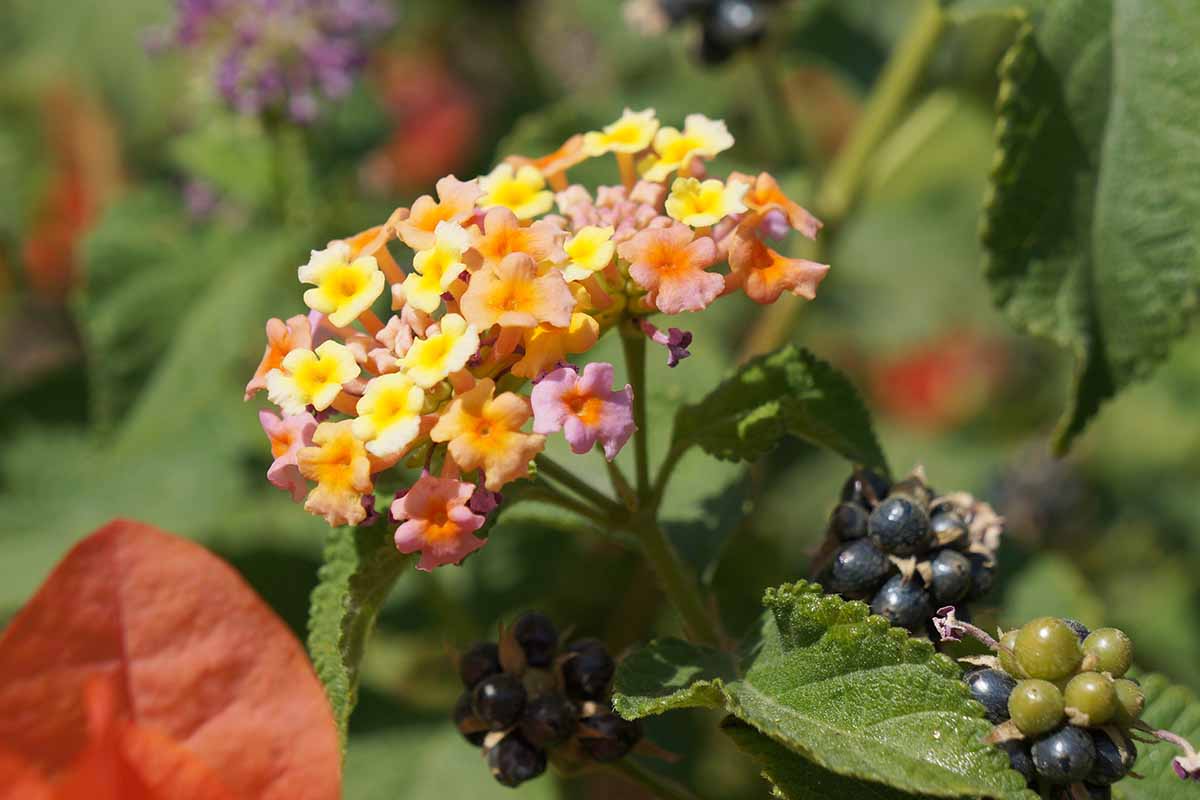
Lantanas may be grown as annuals or perennials, depending on your location.
These small, broadleaf evergreen shrubs have woody stems, and species plants produce small peppercorn-like berries in a variety of colors. Hybrid cultivars may not produce fruits.
Most lantana bushes will grow up to six feet tall in their native climate, but if cultivated in cooler zones as annuals, they may grow up to three feet tall in a growing season.
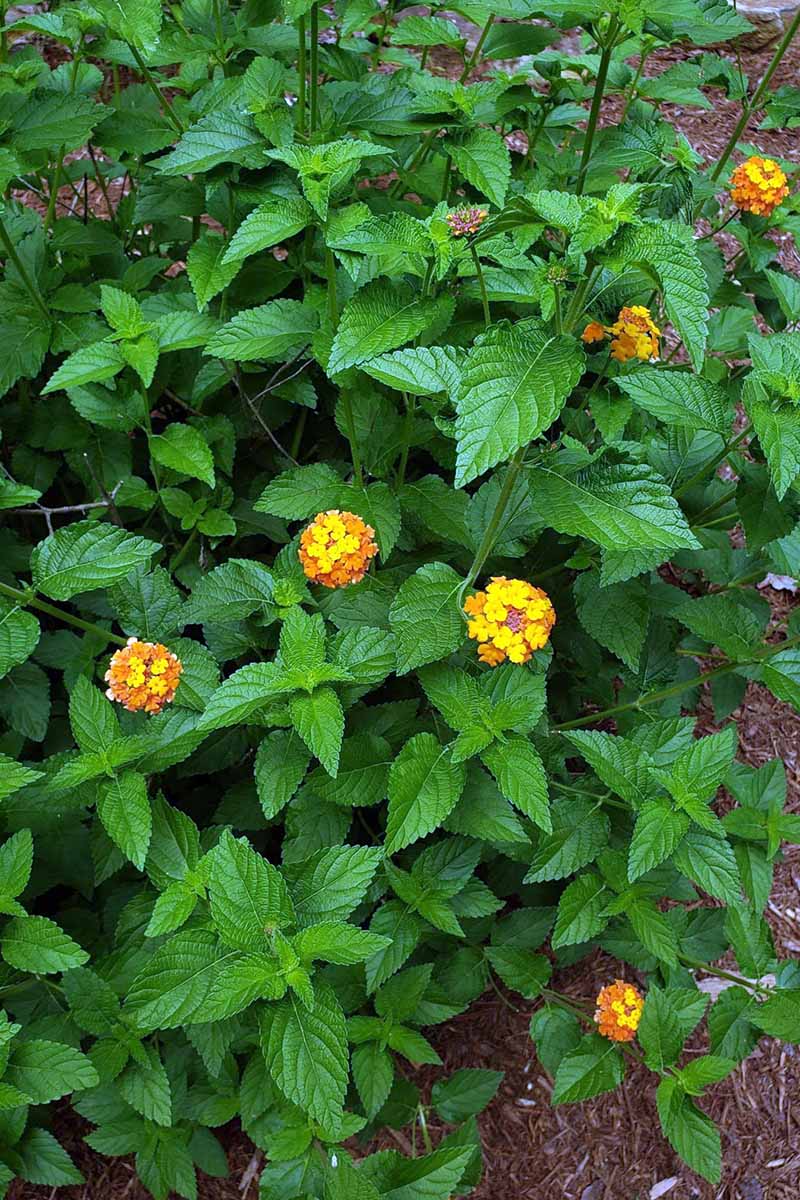
Depending on what species or cultivar you select, there are trailing varieties that serve as climbers, but overall, they make exceptional ground covers.
They also provide a wonderful source of nectar that attracts pollinators.
Cultivation and History
Native to tropical regions of Central and South America and Africa, Lantana species may be found today throughout numerous areas of the world, including southern Europe, Asia, the Middle East, India, Australia, New Zealand, the Caribbean islands, Mexico, and the United States.
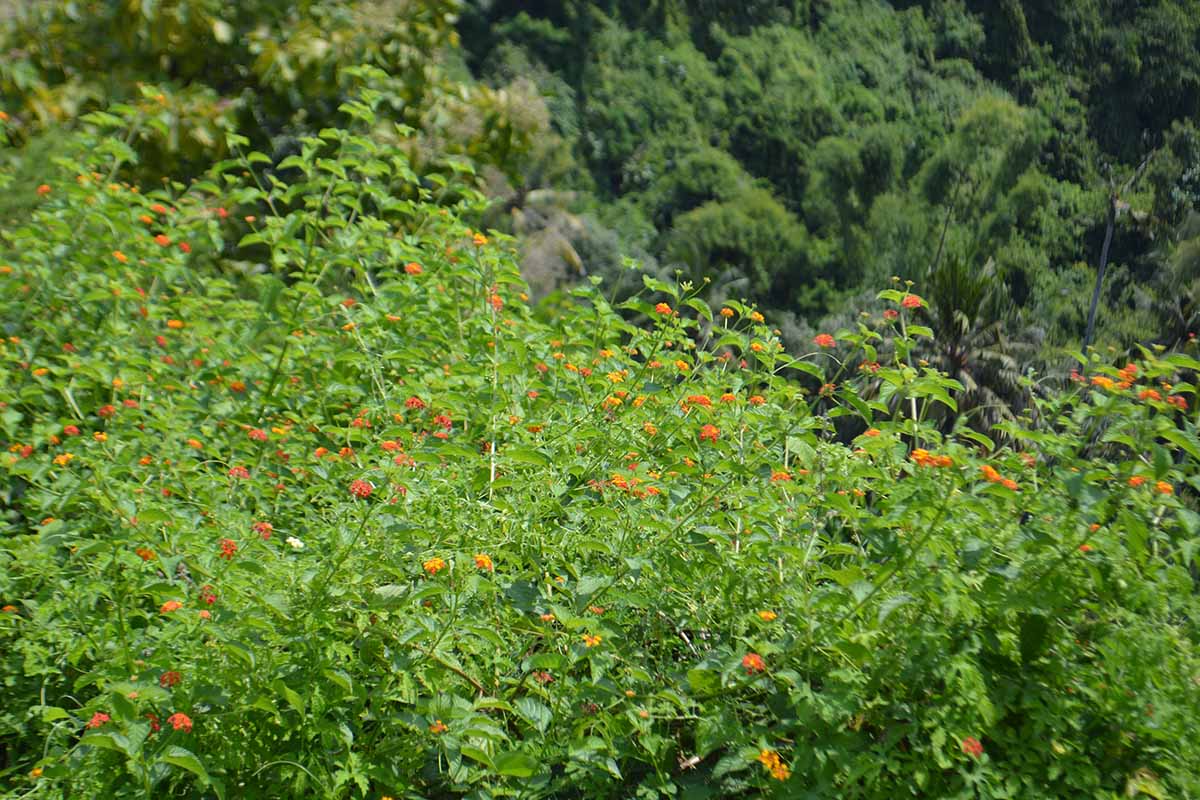
In the 18th century, lantana was a popular greenhouse plant in Europe, leading to breeding efforts that resulted in hundreds of available selections.
But it is known to be invasive throughout many regions – use caution when planting if this is a known problem in your area.
Historically, in regions where lantana was introduced outside of its native range, it often escaped cultivation and established itself as a freely growing species. But with regular maintenance and care your selected species should not run wild.
One of the most popular species commonly grown today is L. camara. This species is known for its aromatic leaves and wide range of color variations, from yellow to orange to red, or white to pink to lavender.

Additionally, different cultivars of L. camara have been developed, resulting in variations in appearance and shade tolerance.
Note that L. camara is considered invasive in Florida, Hawaii, Australia, and New Zealand.
Lantana Plant Propagation
There are two ways to propagate lantana plants. Let’s dig in to determine the right method for you.
From Seed
In USDA Hardiness Zones 9 to 11, where these plants grow as perennials, you have the choice of sowing seeds directly outdoors or starting them indoors in the winter or early spring.
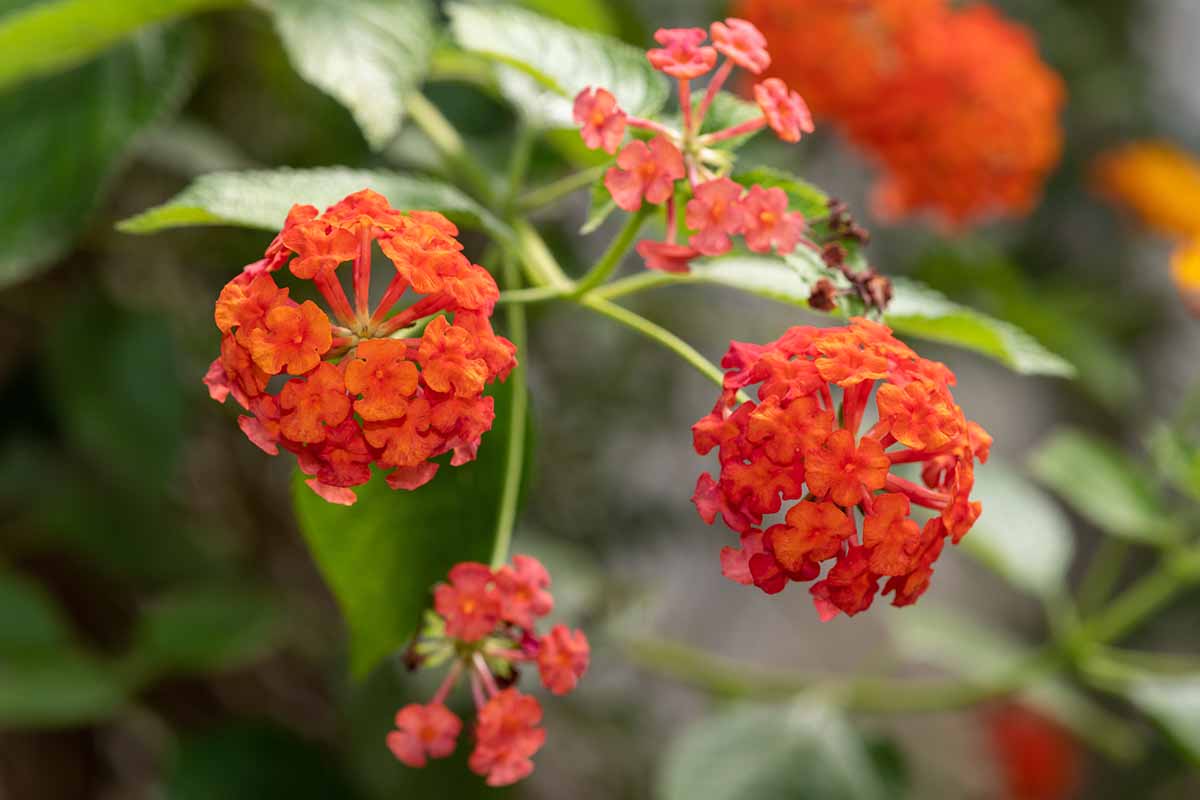
In Zones where lantana is grown as an annual, start seeds indoors about six to 10 weeks before the last expected frost date in your area.
Soak your seeds for 24 hours in distilled water before sowing.
You will use shallow seed trays, starter pots, and some soilless potting mix.
If you are new to soilless potting mix, it is a growing substrate used for container gardening and indoor plant cultivation. It is specifically designed to provide a lightweight, well-draining, and nutrient-rich environment for plants.
The best mixes include equal parts aggregate and organic material. You can use orchid bark, coco coir, or perlite for aggregates and white peat or sphagnum for the organic component. Fill the containers with this mix and moisten it.
After soaking, place one to two seeds in each pot and add another 1/8 inch of mix on top.
I like to use tray inserts with individual cells for starting seeds, like these that are available in packs of five from True Leaf Market. Place the individual pots on your tray.
The seeds must be kept at a temperature between 70 and 75°F and in indirect light. Cover the pots with a clear plastic bag to help keep the moisture in and dampen the soil as needed.
Once your seedlings appear, in about a month or slightly longer, remove the bag. If more than one seedling appears in a single container, you will want to cut the weaker of the two with some sharp, sterile scissors and dispose of it.
The seedlings may be transplanted after two to four weeks of growth.
In Zones 9 to 11, where you will be more interested in directly sowing outside, you should choose a sunny spot in your garden with well-draining soil.
Prior to planting, you can incorporate well-composted organic matter into the soil to help provide essential nutrients and improve the soil structure.
Lantana is tolerant of different soil conditions, but you should amend very heavy clay or sand with organic compost.
Create shallow furrows or depressions about a quarter-inch deep in the soil and place one to two seeds in each one. Space out your sowing to about six to 12 inches apart. Gently cover the seeds with a thin layer of soil and lightly tamp down.
As the seedlings emerge, thin them if necessary to maintain proper spacing between plants.
From Cuttings
This process is one of the most popular methods, especially when propagating cultivated varieties and hybrids. This method of producing clones of your exact plant is straightforward, and I’ll explain how.
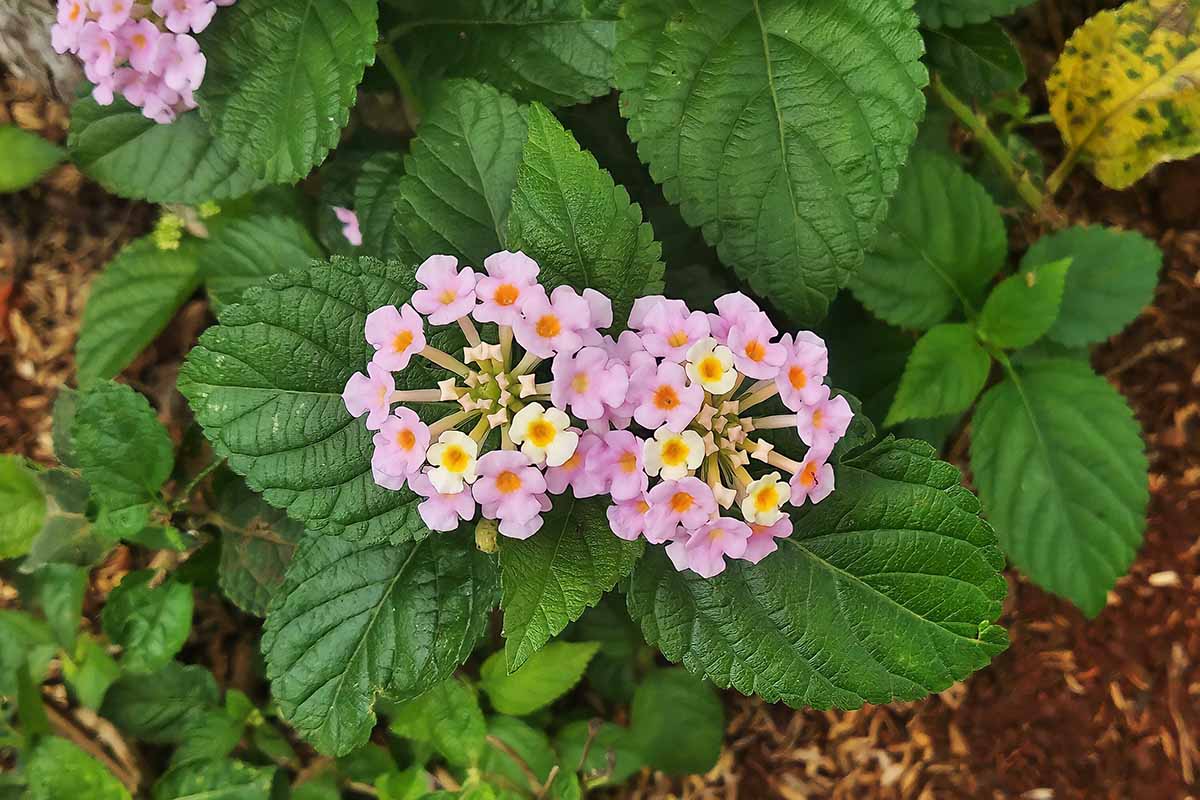
Fill six-inch containers with drainage holes with sandy, well-draining potting mix, or you can use an equal mix of peat and perlite.
Moisten the potting mix with distilled water or rainwater and poke a hole two inches deep for the cutting. Pick some young tender growth for your cuttings.
Use a sharp, sterile knife to make a diagonal cut four to six inches from the tip of the shoot.
Remove all but the top two to three leaves, and any buds that may be present. Dip the bottom two inches into rooting hormone powder. You will then place your cutting in the hole and pack the soil around it gently to help the cutting stay upright. Water it in.
Use a clear plastic bag, such as a gallon-size freezer bag, over the top of the pot to help keep humidity in.
You can use sticks or another supporting structure to keep the bag tented over the plant. Place in a spot with bright, indirect light and water when the soil is dry one inch down.
After the roots form in about three to four weeks, you can remove the bag and move the new plants to their permanent site.
Cuttings can also be propagated in water. This method is known more for how much fun it is than for its practicality. It’s a fun way to get the family involved while watching the roots grow.
Fill a glass bottle, vase, or jar with distilled water or rainwater. Cover the opening with plastic wrap and poke a hole in the center for the cutting.
You will then take your cuttings as described above and stick the stem in the water. The bottom one to two inches should be submerged. Place the container in a bright spot with indirect sunlight where it won’t be disturbed.
When the water level drops, make sure to remove the plastic and add more. The water should be changed whenever it becomes cloudy. It will take about the same amount of time as with the soil method to develop roots before the cutting can be transplanted.
Transplanting
For Zones that experience frost, it is best to wait a couple of weeks after the danger of frost has passed in your area to transplant seedlings or starts from the nursery.
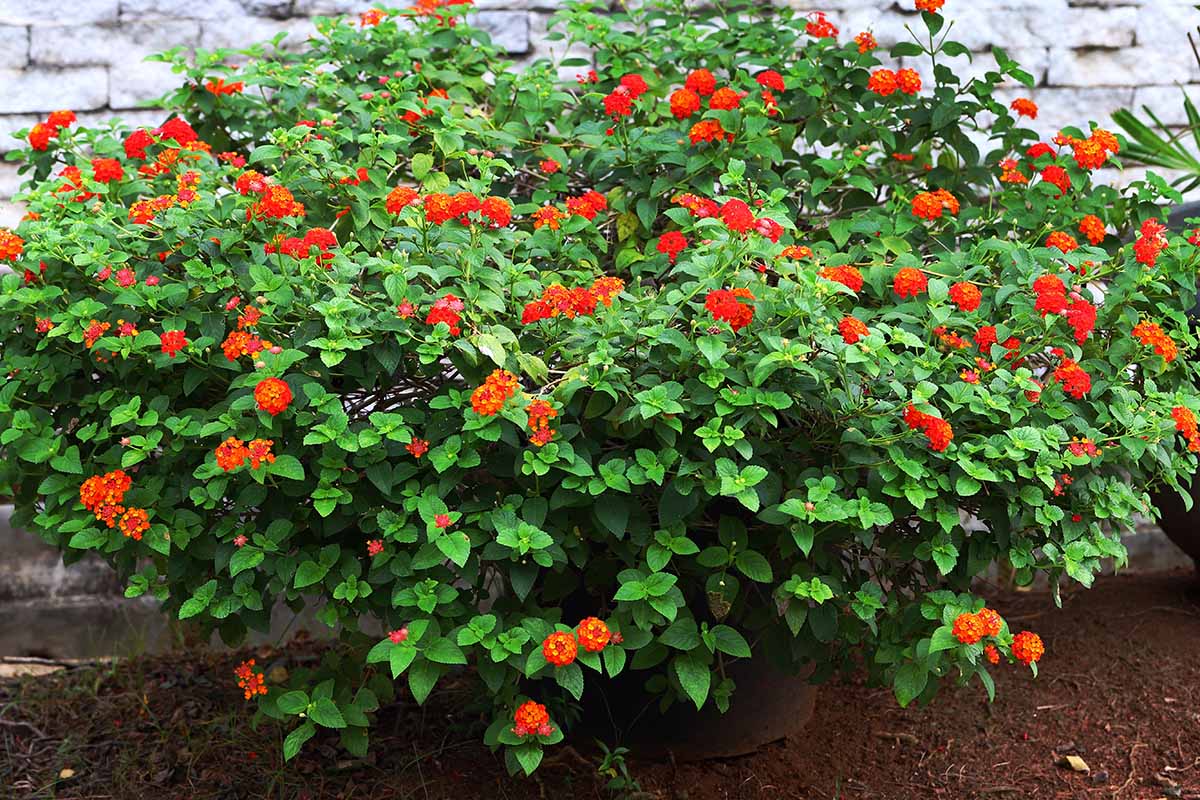
Choose a sunny spot and dig a hole approximately twice the width and depth of the root ball. This will provide ample space around the roots to spread out and establish more easily in the new planting location.
Some gardeners prefer to loosen the root ball if they notice the plant is rootbound when they remove it from the pot for planting.
This is when the roots are tightly packed and circling around the pot, and it can hinder their ability to grow outwards into the surrounding soil once transplanted.
Some will do this by simply teasing the outer roots away from the soil or making a few vertical cuts along the sides of the root ball with a clean, sharp tool. Other gardeners prefer to simply place their plant in the ground, not disturbing the roots at all. This decision will be left to you.
However, it is important to handle the roots with care and avoid excessive pulling or tearing as this can cause damage. Striking a balance between loosening the roots and preserving their integrity is key to ensuring successful transplanting and subsequent growth.
As mentioned earlier in the section on seed planting, you can amend the soil with organic compost if needed before planting. After you have placed your lantana in the ground, backfill with soil and tamp lightly.
How to Grow Lantana Flowers
While lantana is adaptable and can withstand periods of drought and heat, it is still essential to provide proper care to ensure optimal growth.
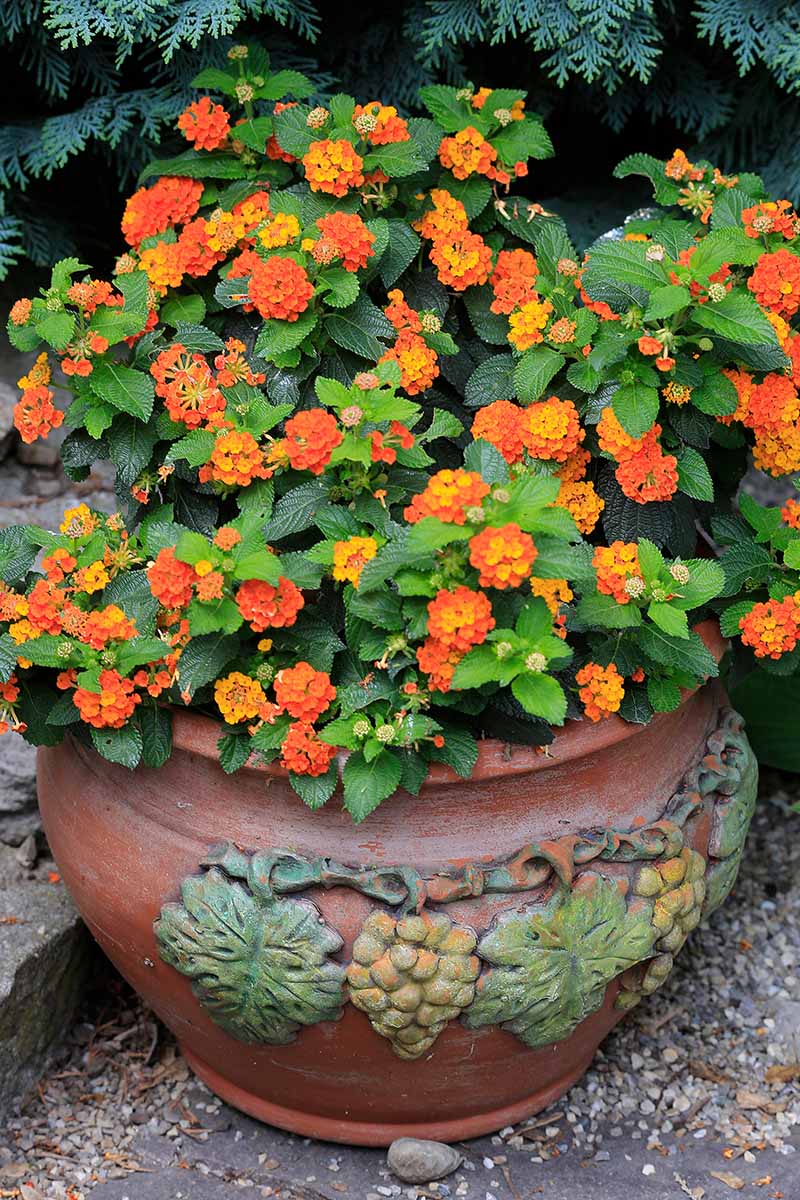
Lantana generally prefers a slightly acidic soil pH of 5.5 to 6.5, but these plants can tolerate a wider pH range. They prefer well-draining soil that is fertile and moderately rich in organic matter.
A loamy or sandy soil with good drainage is ideal. Avoid heavy clay and soggy ground, which can cause root rot. Shady conditions can also cause mildew to form on the foliage.
Once established, they have moderate water requirements. They prefer regular watering to keep the soil consistently moist but not waterlogged. Avoid overwatering, but they may require more frequent irrigation during prolonged dry periods.
Choose a location in full sun – they prefer six to eight hours of direct sunlight daily. Lantanas are heat-tolerant plants that thrive in warm temperatures.

After transplanting, these plants don’t require fertilizer unless your soil is poor.
If your soil needs the added nutrients or if you’re growing lantana in containers, they can benefit from regular fertilization with a balanced product, such as 10-10-10 NPK, to support healthy growth and abundant flowering.
Use a balanced slow-release granular fertilizer or apply a water-soluble fertilizer every four to six weeks during the growing season.
Growing Tips
- Plant in a full sun location.
- Ensure soil is well-draining.
- Provide even moisture.
Pruning and Maintenance
Whether you are growing lantanas as perennials or annuals, it is best to deadhead as needed, stimulating the plant to produce more flowers throughout the growing season.
This will keep your plants looking tidy and attractive.
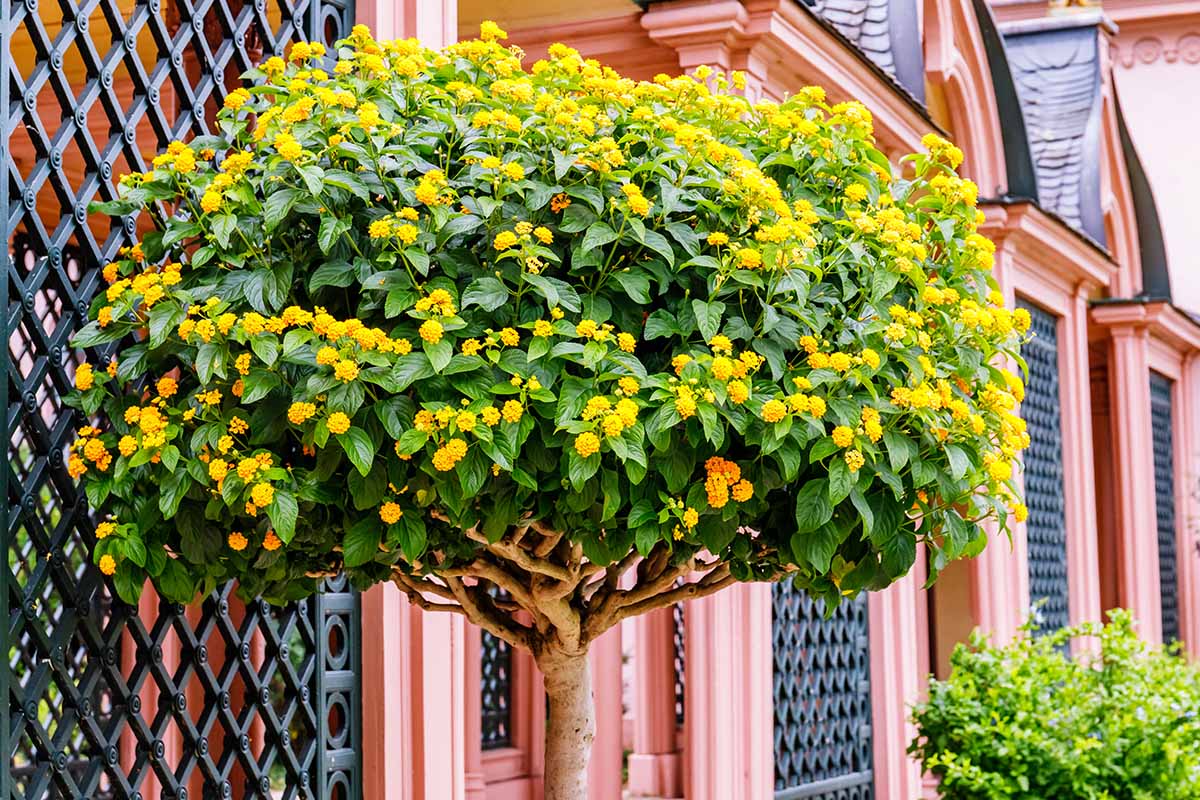
You can trim them during the winter, but this only works in growing zones where they are growing as perennials.
Cutting them back at any time of the year is okay if they begin to take over your yard.
You can cut your lantana back to attain the shape you desire. As a general rule of thumb, do not remove more than one-third of the plant at any one time due to the stress it can cause.
Be sure not to cut them in the heat of the day, as this can cause stress. You will want to trim any dead or broken shoots or branches as you see them.
Lantana Species and Cultivars to Select
Let’s look at some of the most common varieties of lantana worthy of selection:
Buttonsage
L. involucrata is a sweet little species known for its sage-like fragrance.
It grows three feet tall as an upright branching shrub. The flower colors include lavender and white, followed by purple fruit.
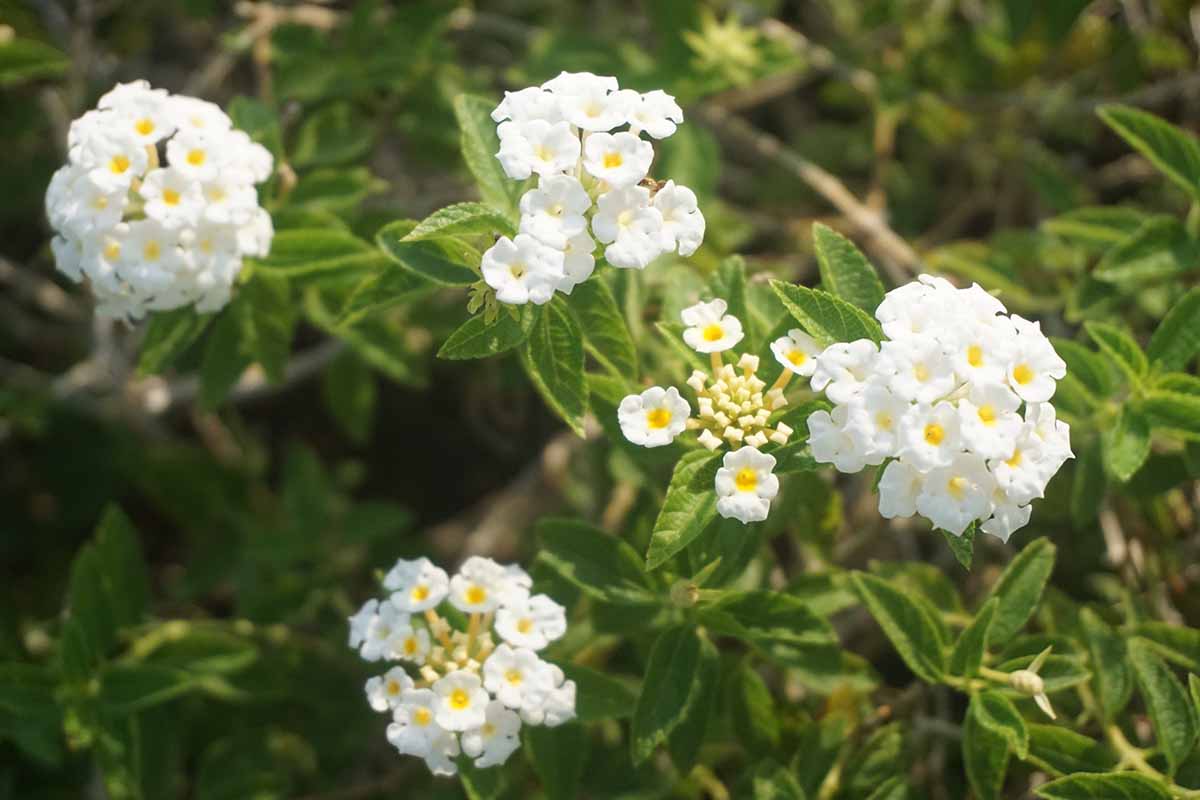
In USDA Hardiness Zones 8 to 11, it can thrive in full sun or partial shade. This species tolerates moist soils and needs medium moisture.
Common Lantana
L . camara is one of the most widely cultivated species. The flowers may be white, yellow, pink, purple, red, and/or orange.
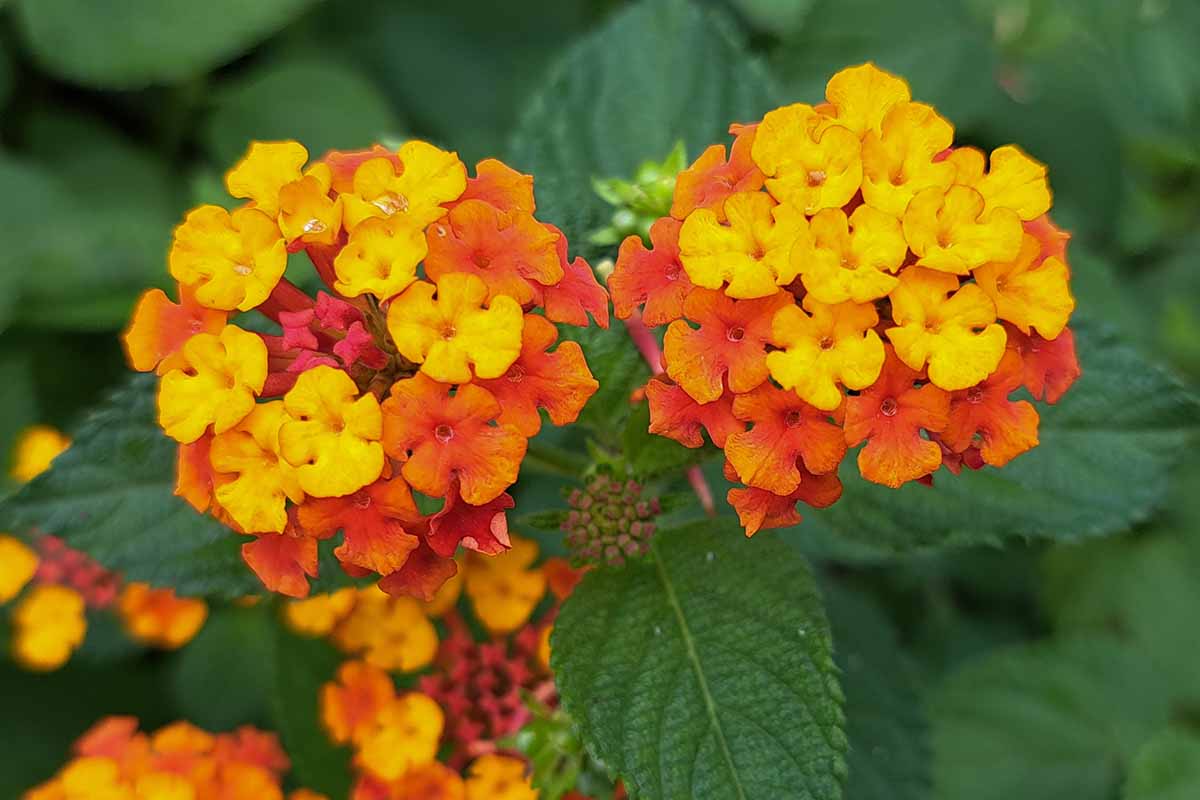
This species spreads very quickly and is considered invasive in many areas, so be sure to do your homework before you plant.
Best suited to Zones 10 to 11, the common species loves full sun, tolerates poor soil, and thrives with medium moisture. This upright shrub grows three to six feet tall.
Landmark® Rose Sunrise is an L. camara cultivar – also known as ‘Balandrise’ – that features an abundance of bright pink and yellow flowers.
You can find Landmark® Rose Sunshine in four-plant bundles available at Burpee.
If white is more your style, check out Landmark® White, aka ‘Balucwhit’ with its creamy-white blooms that have just a hint of yellow in their centers.
Burpee carries bundles of four plants.
Trailing
L. montevidensis is ideal as a dense ground cover. As indicated by its common name, this species has a vast sprawling habit, with thick foliage and beautiful flowers.
It will spread 12 to 20 inches and each vine-like stem can grow upwards of six feet long.
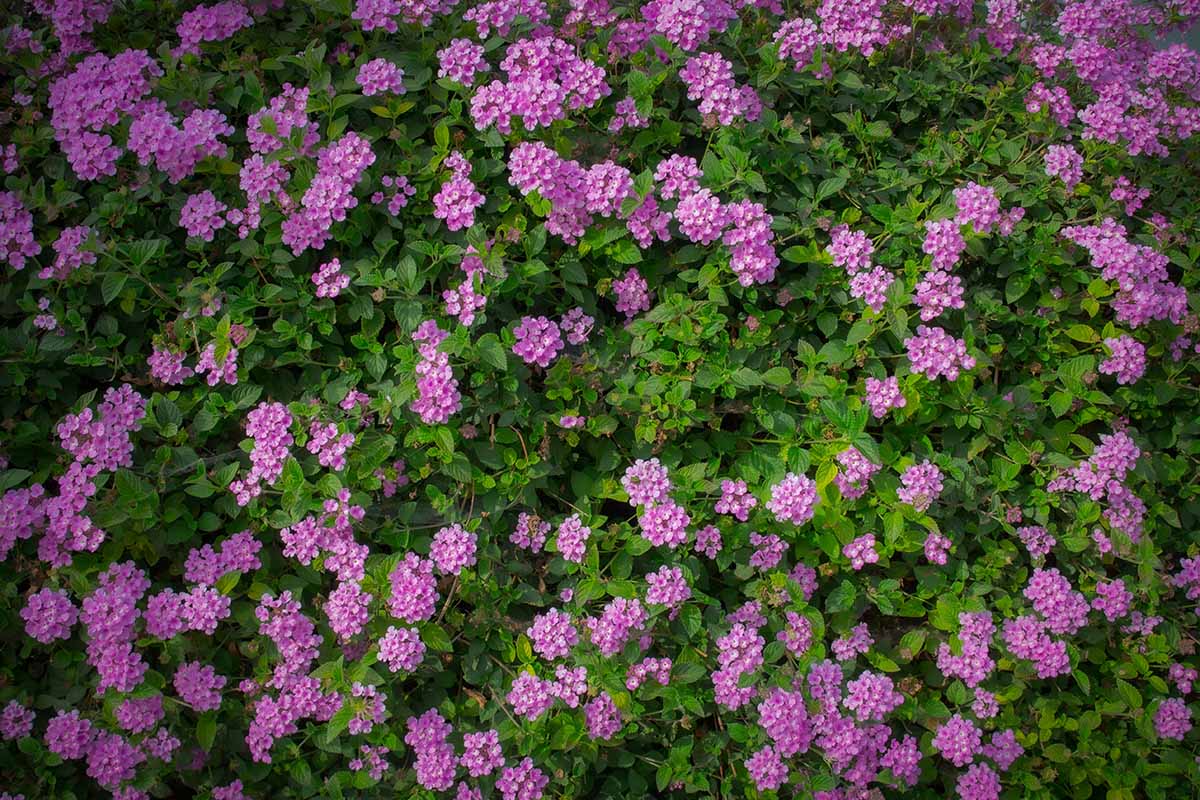
Be careful: this plant has tiny hairs on the leaves that may irritate the skin. The flower colors include purple, pink, and lilac and it’s best suited to Zones 8 to 10.
The trailing species loves full sun, and well-draining soils with medium moisture.
If you are interested in a trailing type, Nature Hills Nursery sells a purple variety.
Managing Pests and Disease
While lantanas are generally considered relatively resistant to pests and disease, they may still encounter a few issues.
Here are some common pests and diseases that can affect these plants:
Herbivores
These plants generally have few issues with vertebrate herbivores, as they contain compounds that make them unpalatable to many animals.
Deer
In places where deer populations are high, they may occasionally chew on your lantana plants, especially during periods of food scarcity.
But these plants are not usually appealing to deer due to the texture, taste, and scent, so you shouldn’t have much to worry about.
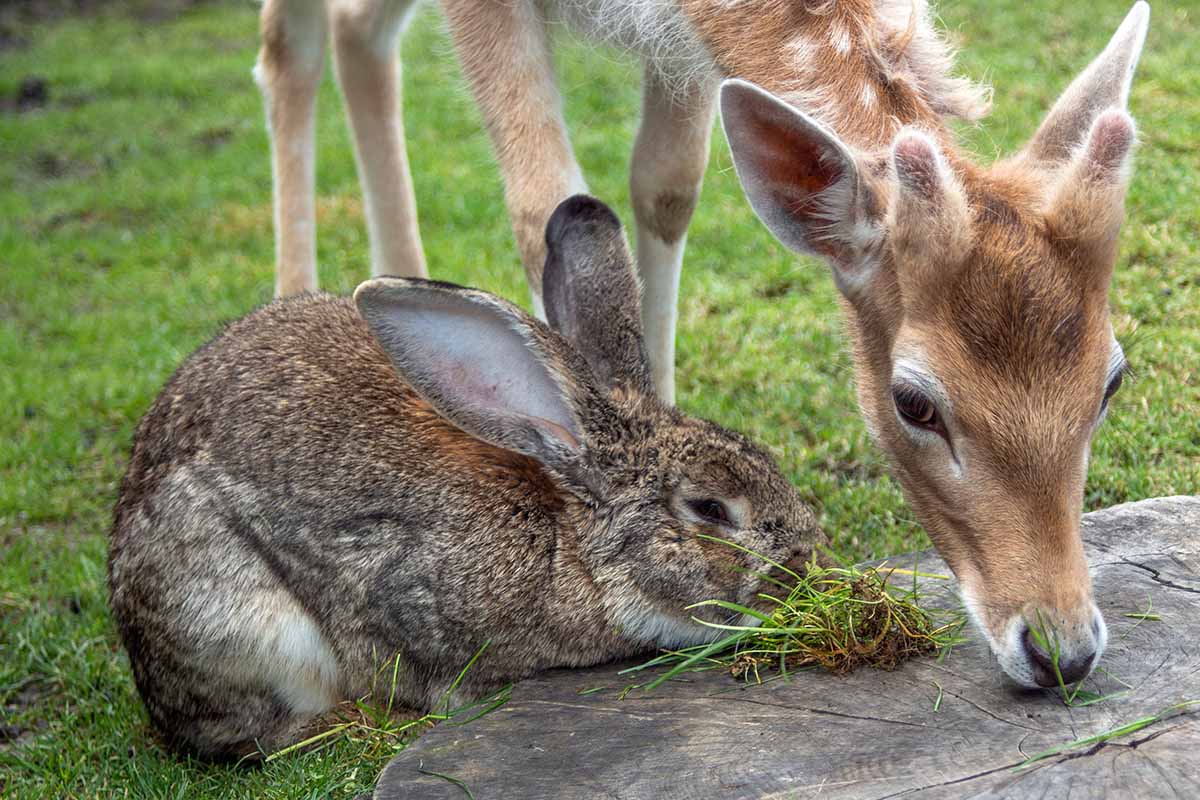
If you are troubled by deer in your garden, odor-based repellents and fencing or motion-activated deterrents can keep them away.
Read more about installing deer fencing in our guide.
Rabbits
What do you know, rabbits are next on the list. Who could’ve guessed?
These nibbling prey animals can sometimes give your plants a nibble or a few, particularly on young and tender growth. Some gardeners find rabbits love to dine on their lantanas, while others not so much.
Protecting your plants with repellents and barriers can deter them from feeding.
Learn more about how to keep rabbits out of the garden in our guide.
Insects
What about the insects? I’m glad you asked.
Don’t worry about these pests, as they can be knocked down with water or sprayed with insecticidal soap.
You can do this in the morning before the weather heats up and repeat applications at least once per week until the problem has been washed away, pun definitely intended.
Keep in mind that the frequency of using insecticidal soap depends on the severity of the infestation and the specific product instructions. Be sure to read the labels.
Aphids
These small, soft-bodied insects will cluster on new growth and the undersides of leaves while feeding on sap. This can cause distorted growth and yellowing.
Read our guide for more information about aphids in the garden.
Spider Mites
Tetranychus urtica are tiny pests that create fine webbing on the leaves and cause stippling or bronzing of foliage.
They will feed by piercing plant tissues and sucking out the contents, leading to weakened growth.
Our guide to spider mite infestations can help.
Whiteflies
There are various species of whiteflies that are pests of lantanas.
One species in particular, known as Bermisia tabaci, are small, winged insects that will gather on the undersides of the leaves, sucking on the sap, and causing the leaves to turn yellow or wilt.
Read more about dealing with whiteflies in our guide.
Disease
Let’s look into the diseases that are possible with these beautiful flowers.
Please note that there are many homemade do-it-yourself fungicides that you can try before using chemical products.
Natural fungicides such as neem oil, potassium bicarbonate, or copper-based products may be used to address the diseases described below.
Botrytis Blight
This gray mold is a fungal disease caused by Botrytis cinerea that’s common with excessive moisture. Generally, plants will not fall victim this disease if you avoid overhead watering.
If you see wet, brown spots on the leaves that are soon covered by gray mold, you can treat this disease with a fungicide containing fenhexamid or chlorothalonil.
But if you are anything like me, and more interested in the idea of natural fungicides, then I have good news for you: Many gardeners have reportedly used natural fungicides such as neem oil, baking soda, three percent hydrogen peroxide solution, copper-based fungicides, compost tea, horsetail tea, essential oils, aloe vera, and herbs to treat botrytis blight successfully.
Powdery Mildew
This white, powdery fungal growth can appear on leaves, stems, and flowers. It can cause leaf distortion, stunted growth, and reduced flowering.
High humidity and poor air circulation can promote its development.
Discover homemade and natural remedies for powdery mildew in our guide.
Lantana Flower Best Uses
Lantanas are versatile ornamentals that attract beneficial pollinators to the garden, such as hummingbirds, butterflies, and bees. They can be used in landscaping as well as containers.
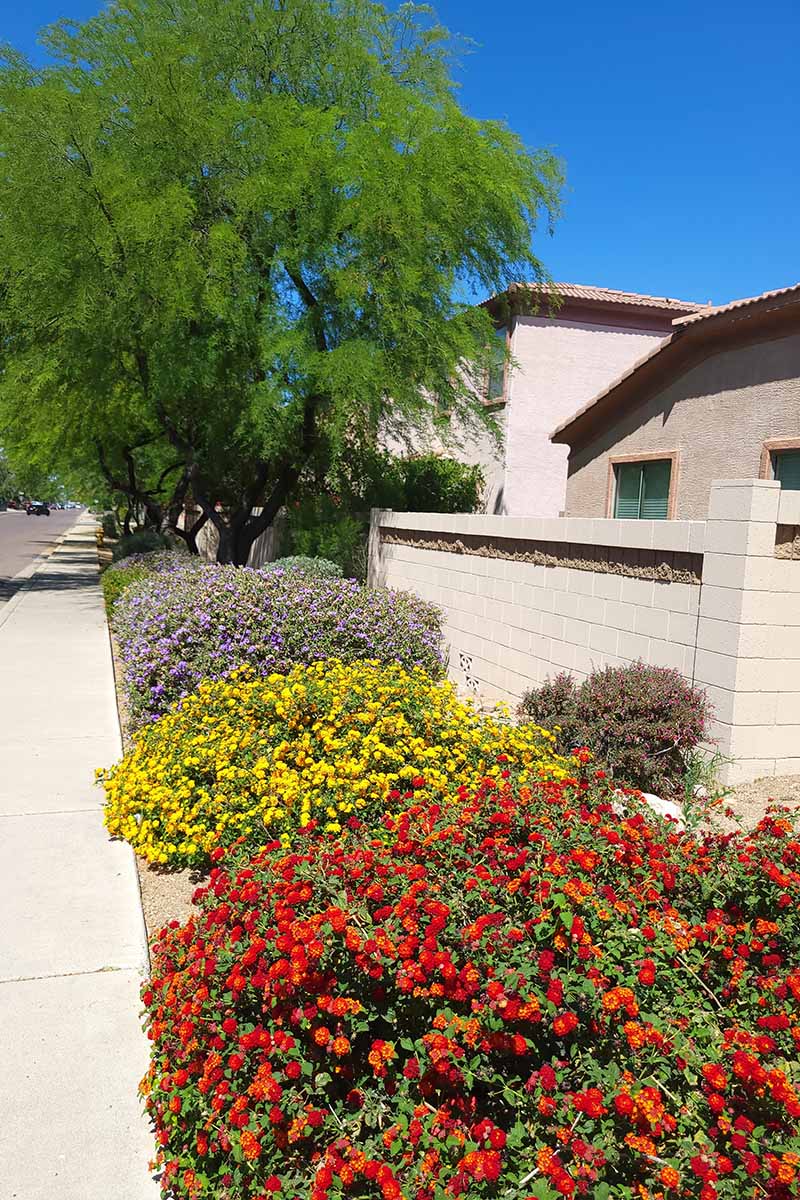
Not only is it ornamental, lantana is a beneficial herbal medicine, and it has been used to assist with various ailments.
According to a published review article of the medicinal properties of the leaves of L. camara, it has been documented as a treatment for many health problems, including malaria, eczema, tumors, high blood pressure, ulcers, asthma, chickenpox, measles, fevers, sores, cuts, swelling, rheumatism, tetanus, and catarrhal infection.
Please note that medical advice should always be obtained from a professional before embarking on any herbal treatment regimen.
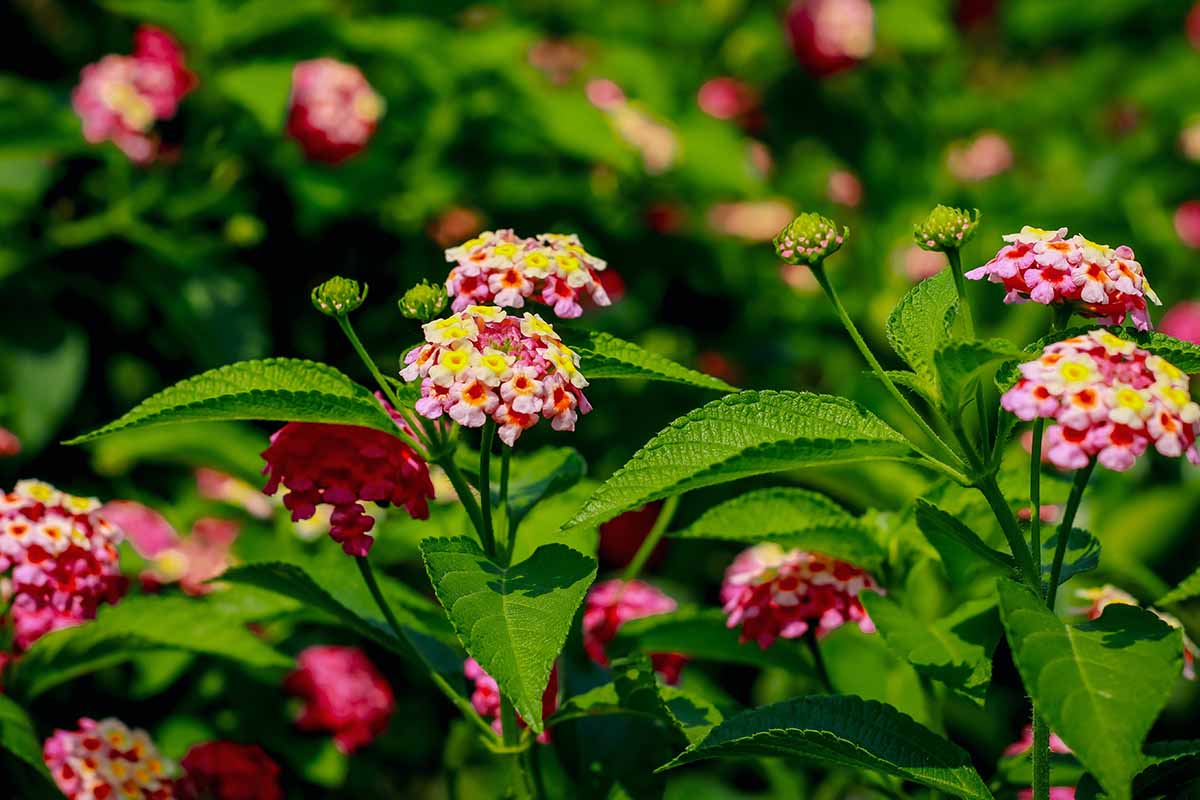
Lantana can be grown alongside other sun-loving flowers and ornamental grasses to create attractive combinations.
Some examples of great companion plants include Angelonia angustifolia, pentas, and salvia.
This plant is a beautiful addition to grow in a sunny spot outdoors or in a location that receives bright, indirect light indoors.
It can be grown as a ground cover, or in pots, raised beds, window boxes, or hanging baskets.
Quick Reference Growing Guide
| Plant Type: | Flowering perennial, grown as an annual | Flower/Foliage Color: | Orange, pink, purple, red, white, yellow, bicolor combinations/green, variegated, golden, purple, silver |
| Native to: | Tropical regions of Africa, Central America, South America | Water Needs: | Moderate |
| Hardiness (USDA Zones): | 9-11 | Maintenance: | Low to moderate |
| Bloom Time: | Year-round in Zones 9-11, spring to fall in Zones 1-8 | Tolerance: | Drought, heat, light frost, various soil types |
| Exposure: | Full sun to partial shade, depending on variety | Soil Type: | Sandy, loamy |
| Time to Maturity: | 12-16 weeks (from seed) | Soil pH: | 6.5-6.5 |
| Spacing: | 18-24 inches | Soil Drainage: | Well-draining |
| Planting Depth: | 1/8-1/4 inch (seed), 2 inches (cuttings) | Attracts: | Bees and other beneficial insects, birds, butterflies |
| Height: | Up to 6 feet, depending on variety | Uses: | Beds, borders, Containers |
| Spread: | 2-6 feet, depending on variety | Family: | Verbenaceae |
| Growth Rate: | Fast | Genus: | Lantana |
| Common Pests and Disease: | Aphids, caterpillars, deer, grasshoppers, leafhoppers, mealybugs, rabbits, spider mites, thrips, whiteflies; Anthracnose, bacterial leaf spot, Botrytis blight, Cercospora leaf spot, leaf rust, powdery mildew, root rot, viruses | Species: | Achyranthifolia, camara, horrida, involucrata, montevidensis, trifolia, urticoides |
Lantana’s Floral Finale
In a world bursting with colors, may lantana emerge in your life as a playful painter, turning your garden into a canvas of vibrant hues.
With its dazzling blooms and irresistible charm, lantana invites butterflies to dance, bees to buzz, and hearts to skip a beat. So, plant your lantana, and watch it grow.

Feel free to share your experiences with growing and caring for these plants in the comments below. Out of all the different varieties, we would love to hear what variety you chose to grow in your garden.
If you like tiny flowering plants as much as I do, why don’t you take a look at these guides next:
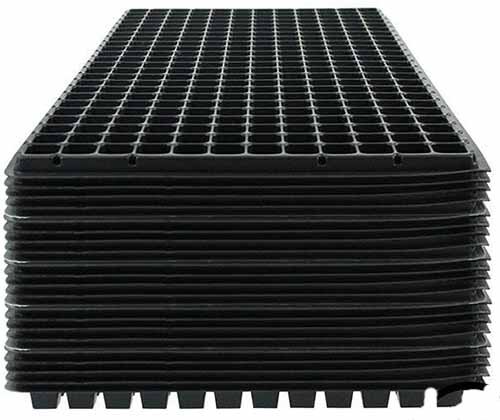
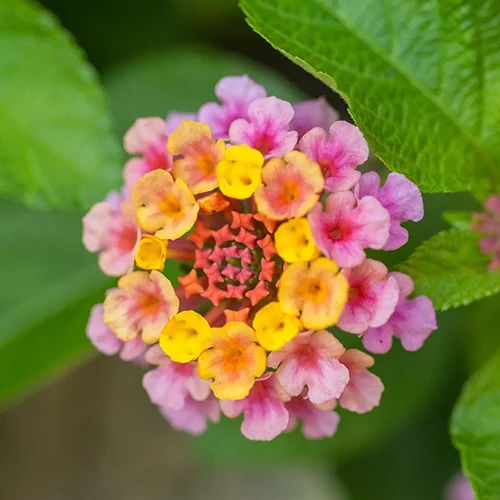

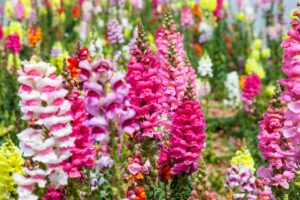
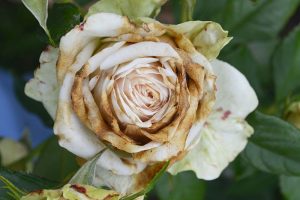
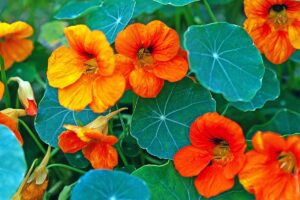
Thank you! So much helpful information!!